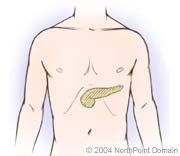Controlling Diabetes
Basic Facts
- Diabetes mellitus is a condition in which blood glucose (sugar) levels are too high because the body cannot produce insulin or cannot use insulin efficiently.
- If left untreated, diabetes can result in numerous complications, including atherosclerosis, heart attack, stroke, kidney disease, blindness, and amputation. Treatment lowers the risk of these devastating complications.
- Controlling diabetes depends mainly on ensuring that blood glucose levels do not rise too high or fall too low.
- By controlling blood glucose levels, people with diabetes can delay or avoid many of the complications the disorder causes.

Diabetes mellitus is a condition in which the body cannot regulate the amount of glucose in a person's blood. In diabetes, the body either produces too little insulin, no longer uses insulin efficiently, or both. There are several types of diabetes, including:
- Type 1 diabetes;
- Type 2 diabetes; and
- Gestational diabetes.
There is also a condition called prediabetes, also called glucose intolerance or insulin resistance.
WHAT CONDITIONS WILL IT HELP?
Managing diabetes will lower the risk for many conditions, including:
- Heart attack;
- Angina (chest pain);
- Carotid artery disease;
- Compromised immune system;
- Connective tissue disorders;
- Diabetic vascular disease, gangrene, and limb loss;
- Enlarged prostate;
- Eye problems;
- High blood pressure;
- Hypoglycemia;
- Ketoacidosis;
- Kidney infection;
- Leg artery disease;
- Incontinence;
- Nephropathy;
- Nerve damage;
- Prostate infection;
- Renal (kidney) failure;
- Renal artery disease;
- Retinopathy;
- Sexual dysfunction;
- Skin problems;
- Stroke;
- Ureteral stones; and
- Infertility.
GETTING STARTED
Physicians diagnose diabetes by measuring the amount of glucose in a person's blood in one of the following tests:
- Fasting glucose test;
- Oral glucose tolerance test;
- Hemoglobin A1c test; and
- Finger stick test.
After the physician diagnoses diabetes, he or she will screen the patient for any complications.
WHO IS ELIGIBLE?
People who have been diagnosed with diabetes or prediabetes are eligible for methods that control diabetes.
WHAT TO EXPECT
Typical target blood glucose levels are roughly as follows:
- Before breakfast, before dinner, and before snacks, blood glucose levels should be 90 to 130 mg/dL;
- Two hours after meals, blood glucose levels should be less than 160 mg/dL; and
- Blood glucose levels at bedtime should range between 110 and 150 mg/dL.
- Medications
People with type 1 diabetes must receive insulin replacement therapy, which is delivered by:
- Injections; or
- An insulin pump.
In addition, oral medications can increase insulin production or increase the body's sensitivity to insulin, allowing it to work more effectively.
Blood Glucose Monitoring
Regularly monitoring and logging blood glucose levels is an important component of managing diabetes, which is typically done with a finger stick test. Newer tests allow the person to draw blood from the forearm instead of the fingers.
Eat a Healthy Diet
The physician will recommend that the patient meet with a nutritionist or dietitian after being diagnosed to develop a meal plan. The daily dietary ranges can include:
- 6 to 11 servings of grains and starches;
- 3 to 5 servings of vegetables;
- 2 to 4 servings of fruit;
- 2 to 3 servings of dairy products; and
- 4 to 6 ounces of meats, poultry, and fish.
To maintain their blood glucose levels, people should adhere to the following guidelines:
- Plan times for meals and snacks;
- Eat at the same time every day;
- Do not go too long between meals;
- Do not skip meals;
- Take diabetes medications at the same time every day; and
- Check with the physician to determine the best time to take medications based on the meal plan.
Exercise
After consulting a physician, people with diabetes should exercise aerobically for 30 minutes, at least 5 times per week.
Because exercise lowers blood glucose, people with diabetes should consider the following exercise guidelines:
- Exercise at about the same time every day;
- Measure blood glucose before and after exercising;
- Learn the symptoms of hypoglycemia;
- Have sugar readily available, such as glucose tablets, juice, or hard candy, in case blood glucose drops to below 70 mg/dL during exercise; and
- Stay hydrated during exercise.
Lose extra weight
People with diabetes and prediabetes should lose weight to better manage blood glucose levels.
Quit Smoking
Nicotine interferes with the functioning of insulin, making it more difficult to regulate blood glucose levels.
Limit Alcohol Consumption
Alcohol should be consumed in moderation, which means an average of 1 to 2 drinks a day for men and 1 drink a day for women. Alcohol is quickly converted to glucose but it can also lower blood sugar, especially in people who take insulin replacement therapy or oral medications. Therefore, diabetes patients should never drink on an empty stomach.
Check for Foot Ulcers
To minimize the risk for foot ulcers (sores), which can lead to gangrene, people with diabetes should examine their feet every day and protect their feet from surface injury and moisture.
Monitoring For Complications
People with diabetes should make sure that they receive the following tests and procedures to ensure that they are meeting goals for blood glucose, blood pressure and cholesterol and to screen for any complications:
- Hemoglobin A1c;
- Microalbuminuria;
- Cholesterol;
- Foot examination;
- Eye examination;
- Blood pressure;
- Vaccines;
- Preconception care; and
- Ankle Brachial Index.
HOW SOON WILL IT MAKE A DIFFERENCE?
Many of the changes will make a difference immediately. By maintaining tight control over blood glucose levels, a person can avoid hyperglycemia and hypoglycemia. Exercise and weight loss increase a person's insulin sensitivity and improves cholesterol levels very quickly.
Copyright © 2017 NorthPoint Domain, Inc. All rights reserved.
This material cannot be reproduced in digital or printed form without the express consent of NorthPoint Domain, Inc. Unauthorized copying or distribution of NorthPoint Domain's Content is an infringement of the copyright holder's rights.
